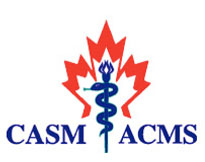
Overuse injuries and burnout in sports is not catastrophic in the same way as SCA, neck injuries and EHS have the potential to be, but these are two “hot topic” concepts are making their way through the news these days. These concepts have become a popular topic of conversation as youth sports continues to be a major focus here in the US. Overuse injuries may be the physical consequence of the changing youth sports participation (or should I say competition) environment, while burnout is the mental consequence. The AMSSM position statement does a great job of introducing you to the concepts of overuse injuries and burnout and can provide you key information in a variety of areas, including risk factors, sport specialization and prevention.
OVERUSE
INJURIES
According
to the position statement from the American
Medical Society for Sports Medicine (AMSSM) an estimated 27 million
children between ages 6 – 18 participate in team sports, while 60 million
children participate in some form of organized athletics (44 million in more
than one sport). Overuse injuries are
estimated at approximately 46% across all sports, with lower incidence in
sports such as skiing (37%) and higher incidence in sports such as running
(68%). These numbers are attention
getters, but even more important to note is that many experts believe these
injuries are underestimated in the literature based on how “injury” is defined.
When
focusing on overuse injuries, prevention is the best medicine, but also
understanding which athletes may be at risk (so you can modify their activity
as needed) may be helpful. The position
statement clearly delineates several key factors to help you identify whether
your athlete(s) may be at risk. Parents
should be familiar with these factors in an effort to safely navigate the youth
sport experience. Sometimes, more isn’t
always better. Especially in the case of
injuries described as “high-risk”. These
are the injuries that can result in a lot of time loss from sport and may even
endanger future sports participation. Do
you know what these “high-risk” injuries are?
If not, refer to the position statement.
BURNOUT
“Burnout”, as a
psychological term was coined in the 1970s by Herbert Freudenberger as a way to
describe the consequences of severe stress and high ideals. He originally coined this term when looking
those in the helping professions who because exhausted and listless, often
quitting their jobs because they struggled to balance caring for their patients
and themselves, often putting their patients first.
Today
burnout is used frequently to describe anyone who is experience emotional
exhaustion, alienation and reduced performance (most often relative to a job or
work), but a clear definition still alludes the experts. This idea of emotional exhaustion, alienation
from activities and reduced performance has made it into the sports landscape
and is a common area of investigation. Burnout in sports is similar to burnout at
work and at its worst often leads to young athletes dropping out of their (once
favorite) sport. As with overuse
injuries understanding important risk factors and key signals can help any
parent decrease the likelihood of burnout in their young athlete(s). The position statement lists some key facts
to understand about burnout,
In
the end overuse injuries and burnout in youth athletes seem to be connected in
some ways, similar risk factors ranging from possible early
sports specialization, over training and high performance expectations. It is important to recognize these potential risk
factors and make decisions on behalf of your young athletes to help preserve
their health, both physically and mentally.
Heather L. Clemons, MS, MBA, ATC


